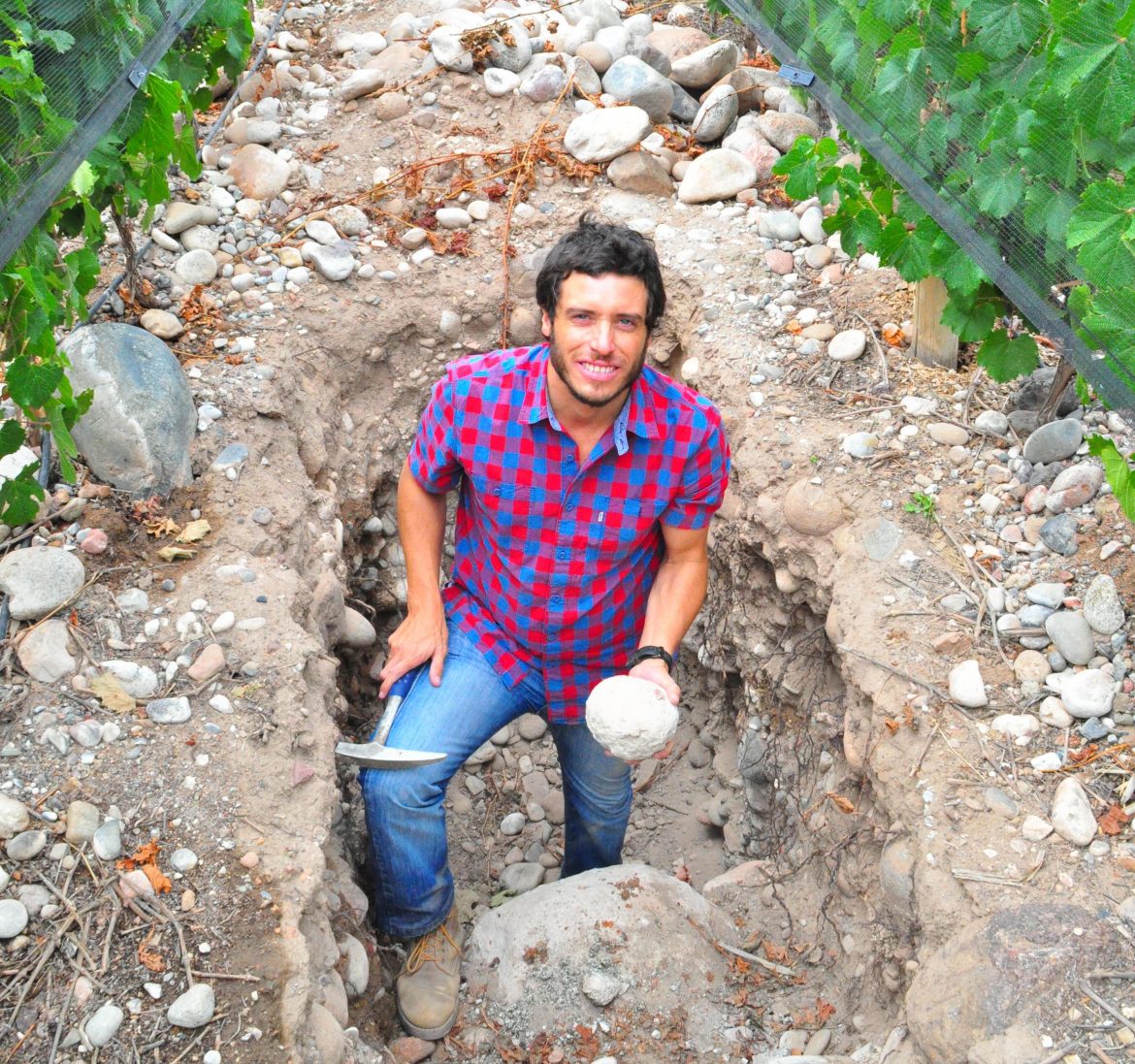Sebastian Zuccardi is a third generation winemaker in Mendoza and one of the most respected winemakers of his generation. In this interview, Amanda Barnes asks Sebastian Zuccardi all about the terroir of the Uco Valley and the climatic conditions and soils that make it distinctive. They discuss Altamira and the best Uco Valley wine regions for making Malbec with texture, and explore the changing climate in Mendoza. Read on for highlights from our Sebastian Zuccardi interview, or watch the video interview below.
The climate & weather of Altamira and the Uco Valley
How would you describe the normal weather in Mendoza?
Mendoza is a desert at high altitude, so in general we have a lot of sunlight! The fantastic thing about the Uco Valley, especially in this part of Altamira which is close to the Andes mountains, is that we are very close to the sun. So the sunlight is bright all the time. In general it’s very dry and warm.
Climate change in Mendoza
Your family has been making wine here for three generations. How have you seen climate change over the years, and how has it affected your winemaking?
It’s difficult to say because I don’t know if it is really climate change or just a cycle. But it is true that in the last three years it has been cooler than the years before. But I can’t tell you if this is just the weather or climate change. But recent harvests have been a little bit more humid and cooler. So for our style of wine it seems interesting because we are looking for slow ripening and we are not looking for very high levels of alcohol.
Altamira wine region & why it is a unique sub-region

What makes Altamira a special wine region for you?
Altamira is a special place. We are 1,100 metres [above sea level] and very close to the alluvial cone or the alluvial fan of the Tunuyán river. All of the soil that we cultivate on in Mendoza are alluvial soils. These round stones came from the mountain rolling. Millions of years ago we had big glaciers and when these glaciers melted all this water came down [bringing] the stones.
Altamira is very close to the mountains, so the water here had a lot of energy and could lift [large] stones. As you move further from the beginning of the alluvial cone, the energy of the water is less intense. So, the stones are deeper, and smaller.
Altamira is covered in big stones but the other characteristic is that all the stones are white. If you see the stones, the stones have a white layer around them. This is chalk that came from the Andes mountains. Inside these stones is all granite, but on the outside, it is chalk and the fantastic thing is how the roots [grow around] all these stones.
Chalk and wine

What do you think the chalk brings to a wine?
Scientifically, you have no explanation. But every time when you travel and when you taste in places where you have chalk in the vineyards, I believe that the calcareous gives structure to the wines.
You talk a lot about the texture that chalk gives you and how it replicates it in the mouth when you taste the wine…
It is difficult to talk about minerality, because it is a word that is difficult to define. For me, the effect of the chalk in our soils is texture. It is grip. When you taste [the wine], in the middle of your tongue you feel a chalk texture. So for me, Altamira is a place where you don’t have very big, voluminous wines, but the texture is fantastic.
Where else do you get this texture in the Uco Valley?
For me the most textural regions, which has a very strong relationship with chalk soils, are Altamira, Gualtallary and San Pablo. But I’m not saying that these are the only good regions in Mendoza, chalk gives you something in the wines but then you have regions, like Chacayes, La Consulta or El Peral, where you don’t have this quantity of chalk but the style of wines is different.
The future of the Uco Valley
What do you think is exciting about being a winemaker in the Uco Valley today?
For me, the most exciting thing is to be in the vineyards. When you walk the vineyards and when you see these kind of soils and how the roots explore, and then you see how the wines are coming from this place… It’s really exciting.
The other exciting thing is that we are dividing and understanding that every region has different expression and also within the same region. The future will be dividing [Mendoza] into more subregions and also within our vineyards… Because of the alluvial movement we have a lot of differences in our soils.
So today our work is in the vineyard… we make wines in the vineyard by separating different kinds of soils. And then in the winery trying to take care of everything that comes from the vineyard separately.
The best regions of the Uco Valley
What are the best regions of the Uco Valley and how many regions do you suggest wine drinkers should they be looking for?
In the Uco Valley you have more than 40 regions. In my opinion, and it’s the vision of one producer, you have 8 regions that are the best. From the south to the north it is Altamira, La Consulta, Chacayes, Los Arboles, San Pablo, Gualtallary, El Peral, and San Jose. All of these areas for me are the most interesting, looking at the influence of the weather and also the soils.
This interview was taken in the vineyards of Familia Zuccardi in Altamira during the 2016 harvests. It was originally published on our sister website Around the World in 80 Harvests.
